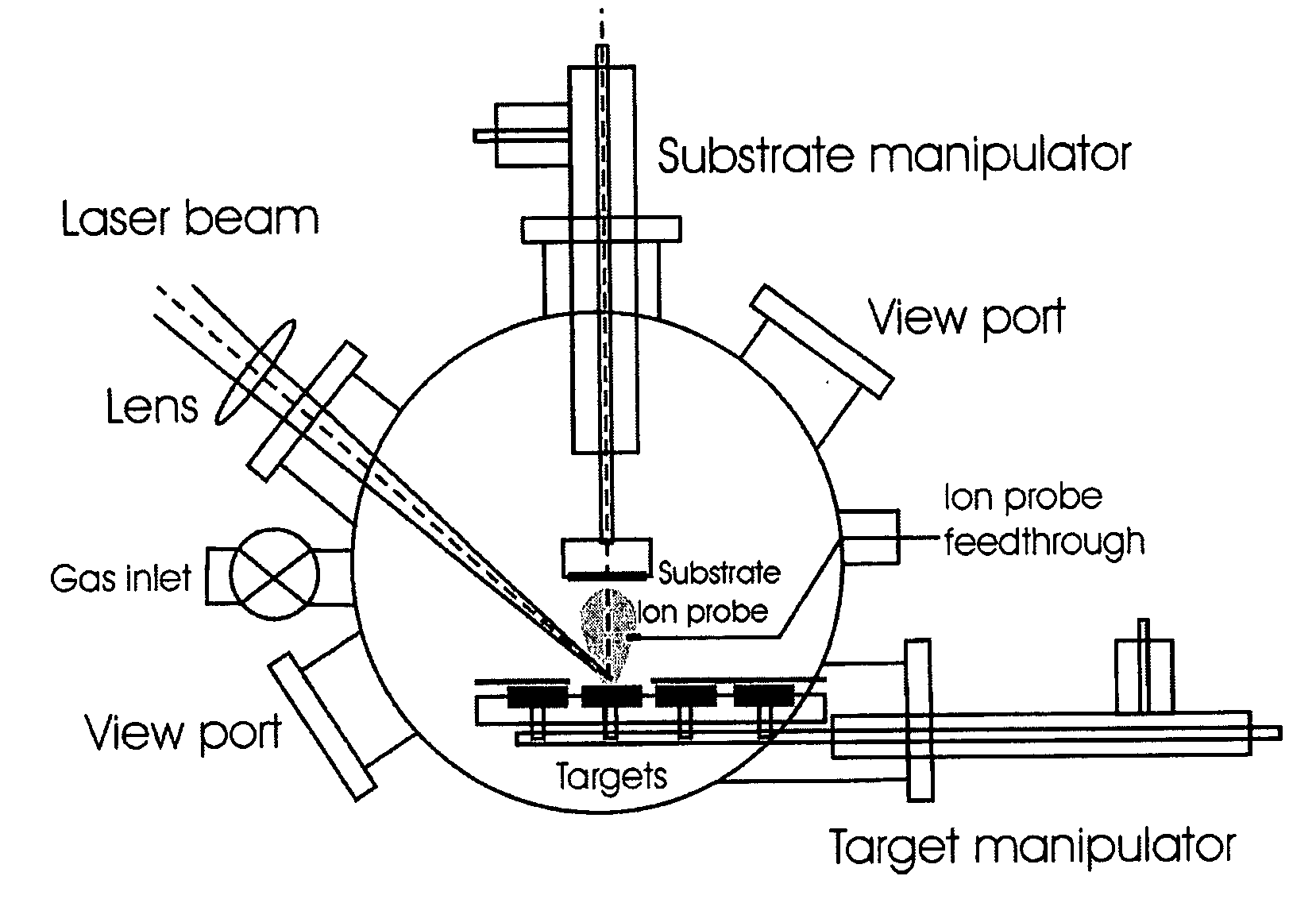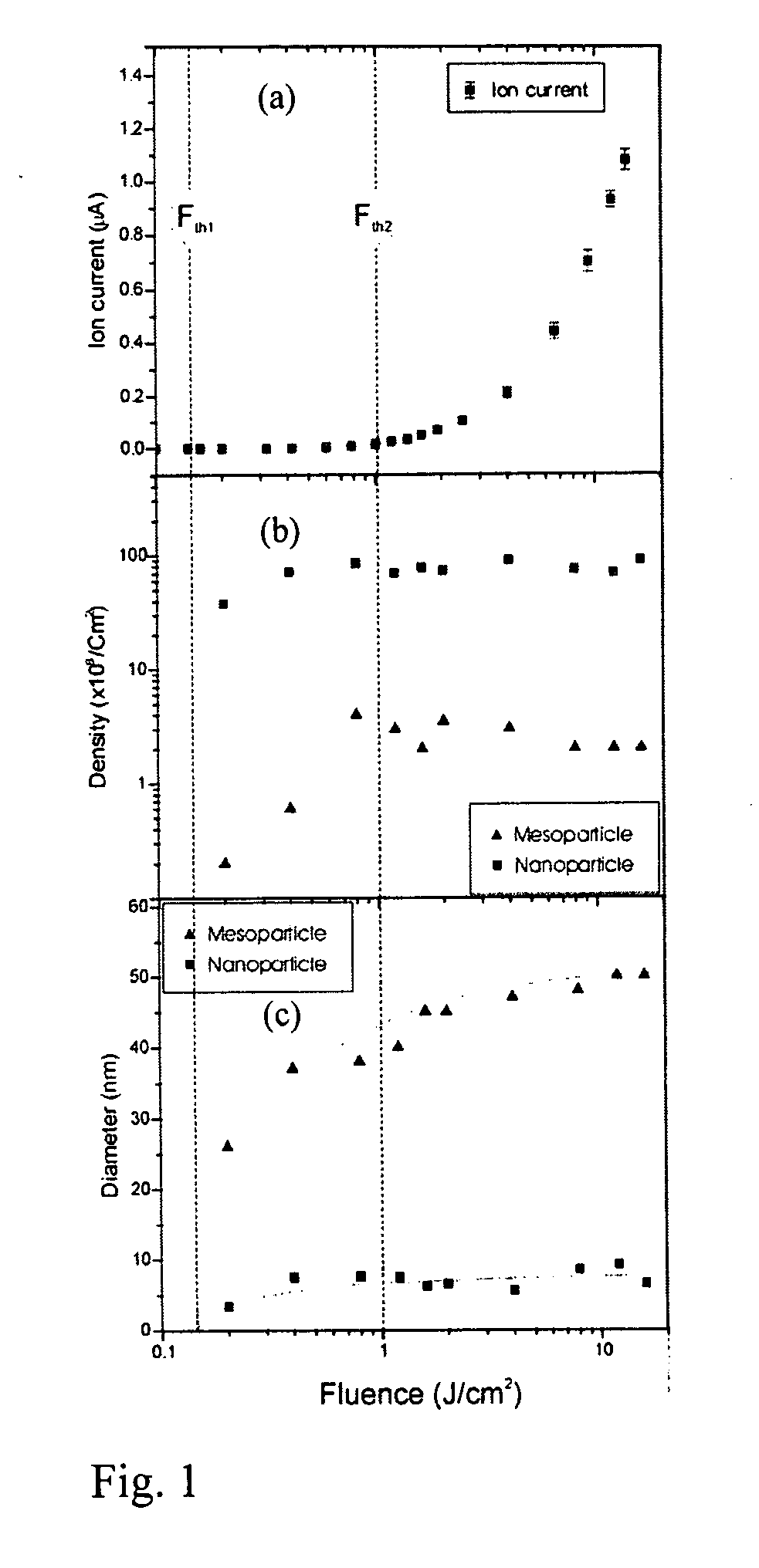Method for producing and depositing nanoparticles
a nanoparticle and nanoparticle technology, applied in the direction of vacuum evaporation coating, nickel oxide/hydroxide, transportation and packaging, etc., can solve the problems of nanoparticle aggregation, organic solvents and additives, and the introduction of impurities, so as to increase the laser fluence, high laser fluence, and the effect of increasing the laser fluen
- Summary
- Abstract
- Description
- Claims
- Application Information
AI Technical Summary
Benefits of technology
Problems solved by technology
Method used
Image
Examples
Embodiment Construction
[0023]FIG. 2 illustrates the system used in this invention. The system includes a vacuum chamber 1 pumped by a turbo pump and a mechanical pump (not shown), a target manipulator 2 which provides for rotational and lateral movement for four targets of different materials, a substrate manipulator 3 which provides heating and rotational and lateral movements for the substrate 10, a gas inlet 4, and an ion probe 6 (Langmuir probe) to measure the ion current of the ablation plume. When measuring the ion current, the ion probe is biased −50 V relative to the ground to collect the positive ions in the plume (the number of negative ions in plasma is negligible). An ultrafast laser (not shown in the figure) is positioned outside the chamber and the laser beam 20 is focused onto the target surface through a fused silica window 21. The laser has a pulse duration between 10 fs-50 ps, preferably between 10 fs-1 ps; a pulse energy between 100 nJ-10 mJ; and a repetition rate greater than 1 kHz. Th...
PUM
| Property | Measurement | Unit |
|---|---|---|
| Fraction | aaaaa | aaaaa |
| Fraction | aaaaa | aaaaa |
| Size | aaaaa | aaaaa |
Abstract
Description
Claims
Application Information
 Login to View More
Login to View More - R&D
- Intellectual Property
- Life Sciences
- Materials
- Tech Scout
- Unparalleled Data Quality
- Higher Quality Content
- 60% Fewer Hallucinations
Browse by: Latest US Patents, China's latest patents, Technical Efficacy Thesaurus, Application Domain, Technology Topic, Popular Technical Reports.
© 2025 PatSnap. All rights reserved.Legal|Privacy policy|Modern Slavery Act Transparency Statement|Sitemap|About US| Contact US: help@patsnap.com



